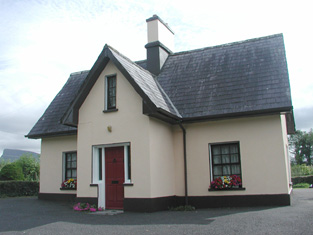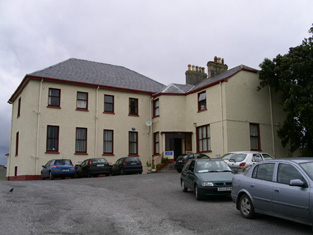Oxfield
Houses within 5km of this house
Displaying 12 houses.
Houses within 5km of Oxfield
Displaying 12 houses.
| House name | Description | |
|---|---|---|
| Lissadell or Lissadill | The Gore Booth family built the first Lissadell House between 1750-1760, in front of the current house. The current house was built in the late eighteenth and early nineteenth century and continued to be the home of the Gore Booth family until the 1990s. In 1906 the house and buildings were valued at £347. The house has been open to the public for many years. It is now owned by E. Walsh and C. Cassidy and is being restored. See www.lissadellhouse.com. |

|
| Finned House | In 1906 Sir Jocelyn Gore Booth owned buildings valued at £8 at Finned, barony of Carbury. This is likely to be Finned House. This townland was the property of the Gore Booth estate at the time of Griffith's Valuation but the highest building valuation at that time was only £2. | |
| Ballygilgan Gate Lodge | In 1906 Sir Jocelyn Gore Booth held over 800 acres of untenanted land at Ballygilgan as well as a house valued at almost £9. |

|
| Wynnesfort House | In 1906 Alexander Lyons owned a property valued at £8 at Rahaberna, barony of Carbury. At the time of Griffith's Valuation this property was leased from the Lyons estate by George Robinson. McTernan states that the lands passed from the Knox to the Wynne estate in the late eighteenth century. In the early nineteenth century William C. Wood of Rathellen had possession and the house was let to a succession of tenants. It was sold in the Encumbered Estates court in 1853 when the purchaser was Henry Lyons. | |
| Cregg House | Michael Jones, formerly of Lisgoole, county Fermanagh, is described as of Cregg House in 1854. His representatives still held the property in the 1870s. At the time of Griffith's Valuation, it was occupied by Capt. Alex Lumsden, son-in-law of Michael Jones, leasing from John Wynne, when it was valued at £25. Cregg House afterwards came into the possession of the Sisters of La Sagesse and is now a Special Needs facility. |

|
| Rahelly | Francis Barber was leasing a house at Rahelly, barony of Carbury, from the Gore Booth estate at the time of Griffith's Valuation, when it was valued at £25. Rahelly later fell into ruin but has been restored and offered for sale in recent times. |

|
| Millbrook House(Drumcliff) | Edward Simpson was leasing a house, mill and associated buildings at Ballincar, barony of Carbury valued at £16 from the Wynne estate at the time of Griffith's Valuation. He offered the property for sale in the Landed Estate's Court in April 1873. The sale notice indicates that he held it on a Fee Farm Grant from Owen Wynne dated 1868. The original house is no longer extant. | |
| Springfield | The Phibbs estate owned several houses as well as the townland of Springfield or Magheralgillerneeve, barony of Carbury at the time of Griffith's Valuation. One house, valued at £12, was being leased by John Mullan. | |
| Tully House (Carbury) | Charles Simpson was leasing a house valued at £6 at Tully, barony of Carbury, from the Wynne estate, at the time of Griffith's Valuation. A house is still extant at the site. | |
| Drumcliff | The townland of Drumcliff South formed part of the Gethin estate in this area in the eighteenth century. This house was leased to Charles Allen at the time of Griffith's Valuation, when it was valued at £12 10s. The house had a succession of owners in the twentieth century and is still extant and occupied. | |
| Moorfield Cottage | Jeremiah Rogers, a steward on the Gore-Booth estate, was occupying this property at the time of Griffith's Valuation, when it was valued at £5 10s. McTernan states that it remained in the Rogers family until the early decades of the twentieth century. It is still extant and occupied. | |
| Urlar or Beckfield | Leased by William Hamilton,MD, from the Gore-Booth estate at the time of Griffith's Valuaiton when it was valued at over £10. McTernan notes that it was previously held by the Munns family and later in the nineteenth century by George Somerville. Labeled as Beckfield on the First Edition Ordnance Survey Map. It is still extant and undergoing restoration. |

